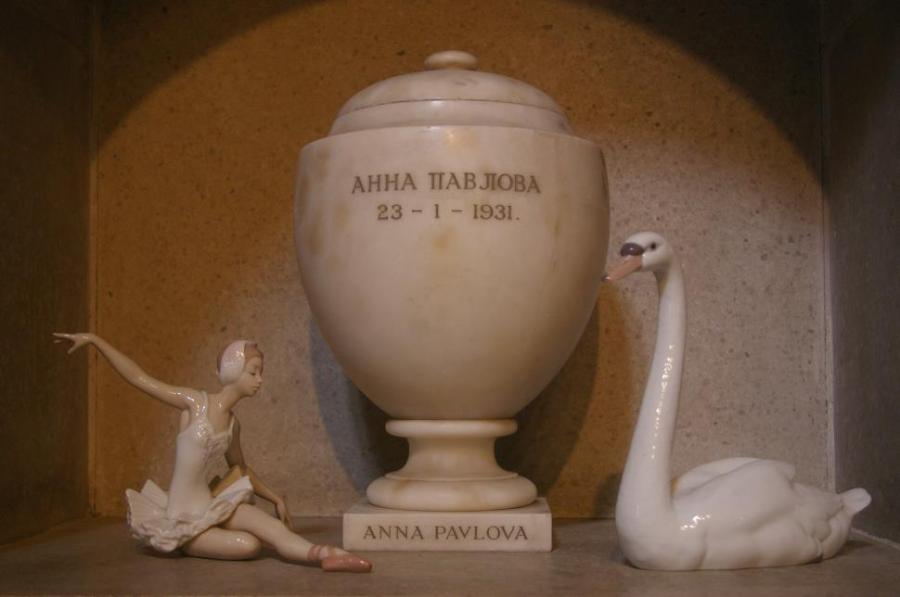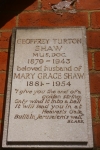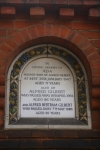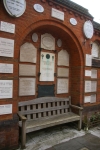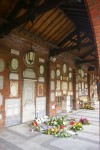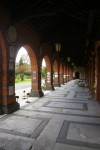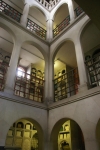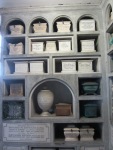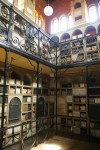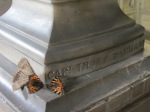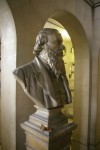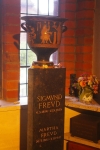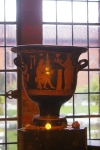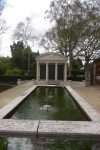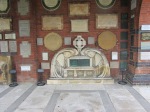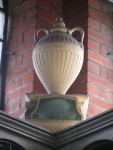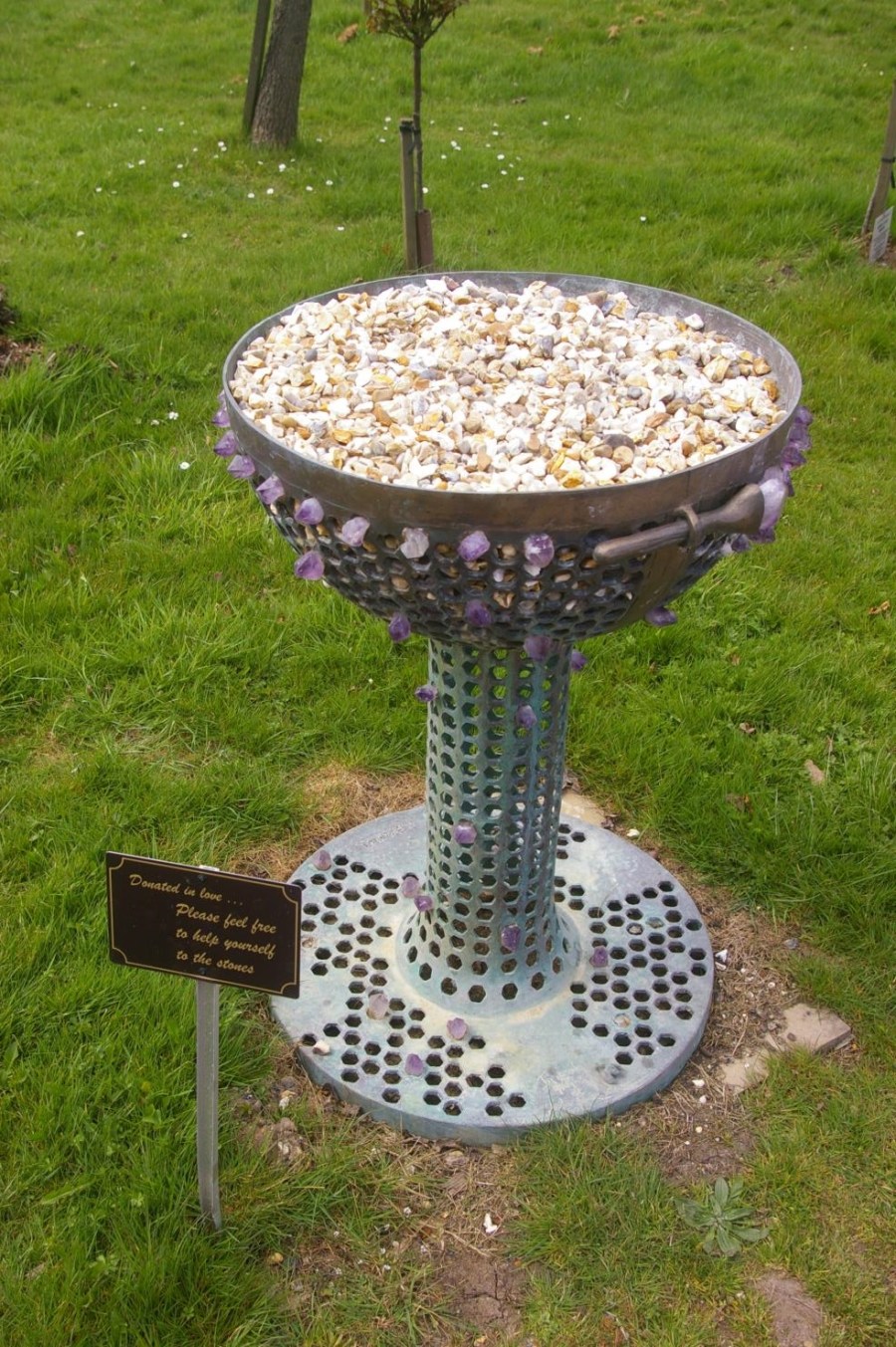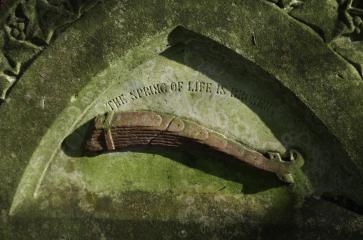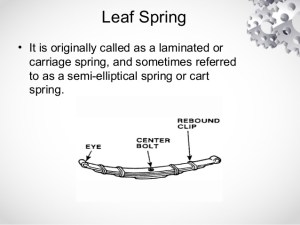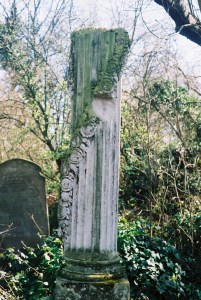
copyright Carole Tyrrell
I encountered The Escaped Nun on a cold November day as I was wandering in West Norwood Cemetery. It’s one of London’s Magnificent Seven Victorian cemeteries and there’s always something interesting to be found. The vegetation had died down and so it was an ideal time to look for forgotten gems.

copyright Carole Tyrrell
I was walking through a clearing near the columbarium when I saw a large monument which had a broken column in top of it with an anchor carved on it and, lower down, a 3D bust of a middle-aged Victorian gentleman which faced me. He stared at me and I stared back. However, I was a little unnerved as his eyes seemed to follow me. But it was the epitaph below that caught my attention. It read:

copyright Carole Tyrrell
EDITH O’GORMAN
(THE ESCAPED NUN)
WIDOW OF THE ABOVE
DIED 25TH MAY 1929
AGED 86 YEARS
LIFE’S RACE WELL RUN
LIFE’S WORK WELL DONE
THEN COMES REST
The Escaped Nun? I was immediately intrigued and contacted Colin Fenn from the Friends of West Norwood Cemetery who very kindly set me off on my journey to find out more..
It was the story of a remarkable and controversial woman, the religious wars of the 19th century and a life full of drama and scandal on both sides of the Atlantic.
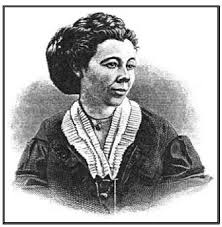
Edith O’Gorman, or Gorman, as she seems to have adapted her name at some point ,came from an Irish family who emigrated to the US and settled in Rhode Island. She also may have originally been named Bridget or Biddie and became Edith, her middle name, at her baptism in 1870. She was born on 20 August 1842 and, after being educated within a Protestant seminary, she received the calling to become a nun in August 1861 when she was 19..
On 1 October 1862 she entered St Elizabeth’s Convent, Madison, New Jersey and describes it as if she had died. Six years later she ran away from the cloisters with $5, and set off on a new life.
Edith now had a new calling; to expose the truth about convent life and she did this in her best-selling book ‘The Trials and Persecutions of Miss Edith O’Gorman otherwise Sister Teresa de Chantal, of St Joseph’s Convent, Hudson, New Jersey’ which was first published in 1871.
It’s an amazing and often entertaining book to read as the pace and revelations never flag. It was incredibly popular with many printings in the USA and abroad and was translated into several languages. In it, Edith describes life behind convent walls which was anything but devotional. She was bullied by older nuns and witnessed cruelty by them towards the orphans in their care. However, on 16 July 1864 aged 22, Edith took her vows and was sent with two other sisters, Agnes and Josephine, to establish a new convent in St Joseph’s Parish, Jersey City, New Jersey. Now Edith’s narrative gets into its stride as she reveals that priests are making money from parishioners paying them to say masses on their behalf and also the fate of many of the nuns. They either left as Sister Agnes did, ended up in local asylums for the insane died or mysteriously disappeared.
A priest attempts to seduce her and eventually Edith runs away. After taking refuge in a hotel she advertises for work as a governess and finds herself in a bordello. She escapes again and, after some more adventures, she converts and becomes a Baptist.
After that she devoted the rest of her life to lecturing against Catholicism. The rest of the book consists of reviews of her lectures. Some of the book has the ring of truth because of what we now know about institutions such as the Magdalene Laundries for ‘fallen’ women and some orphanages.
Edith’s sensational book, which is still in print and available on amazon, entitled ‘Convent Life Unveiled’ has to be seen against the background of 19th century religious fervour. Since Henry VIII founded the Church of England, Catholics had been side lined from public life and denied civil rights which included serving in Parliament ,owning all kinds of property and attending major universities such as Oxford and Cambridge. The cry of ‘No Popery’ was common and the same was true in the USA.
Anti-Catholic feelings of the time were spurred on by the popular press, novels and lurid exposes of life inside convents and monasteries. They all shared common themes: secret tunnels connecting monasteries and convents, illicit affairs between nuns and monks and secret burial places for babies born to nuns. There were other popular books on convent secrets which included Rebecca Reed’s ‘Six Months in a Convent.’ published in 1835 and Maria Monk;s ‘Awful Disclosures of the Hotel Dieu Nunnery of Montreal.’ which was also known as ‘The Awful Disclosures of Maria Monk.’ The latter has never been out of print. However, there was one drawback; neither Rebecca or Maria had ever actually been nuns.
But Edith was the real deal. She travelled the world delivering her lectures. But it was a dangerous business. Edith’s lectures were often attended by devout, protesting Catholics and would often end up in a riot or a serious brawl. She was also the victim of several assassination attempts as she was seen as someone who should be ‘done for.’ One bullet just missed as it passed through her hat. In fact Edith claimed that there had been over 70 attempts made on her and her husband’s lives. This may just mean that the opposition kept hiring assassins with bad eyesight.

She married William Auffray on 17 June 1869 and they settled in England. He was a Frenchman and rumoured to be a former priest who had resigned from the faith.
However, by 1915 she was penniless despite having sold 300, 000 copies of her book and undertaking a 15 year lecture tour with William. After that, nothing more is heard.
But Edith could actually write and write well but she doesn’t seem to have written anything else. If her book had been fiction I’m sure it would have sold even more copies. The pace never slackens and I found myself turning pages faster and faster as each new peril or revelation leapt off the page.
Edith was a remarkable and resourceful woman who clearly believed in what she was doing and was not deterred by violence and threats. She earned her own money and had the stamina to travel the world and spread the word.

copyright Carole Tyrrell
So now Edith rests in a corner of a Victorian cemetery with her husband’s bust keeping watch over her. Gone but not forgotten as long as there’s a passing visitor who reads her epitaph and thinks ‘
‘Why is she the Escaped Nun?’
With thanks to Colin Fenn, Friends of West Norwood Cemetery
Text and photos copyright Carole Tyrrell except for the 2 photos of Edith O’Gorman.
References:
http://www.academia.edu/1507333/The_Identity_of_Edith_O_Gorman_the_Escped_Nun_
https://archive.org/details/conventlifeunvei00ogor (this is the online copy of her book)
http://www.courier.co.uk/nun-s-speech-sparked-riot/story-15120498-detail/story.html
http://diaryofamadgardener.blogspot.co.uk/2010/03/escaped-nun.html (this is a blog by someone who was inspired to write a book about her.


